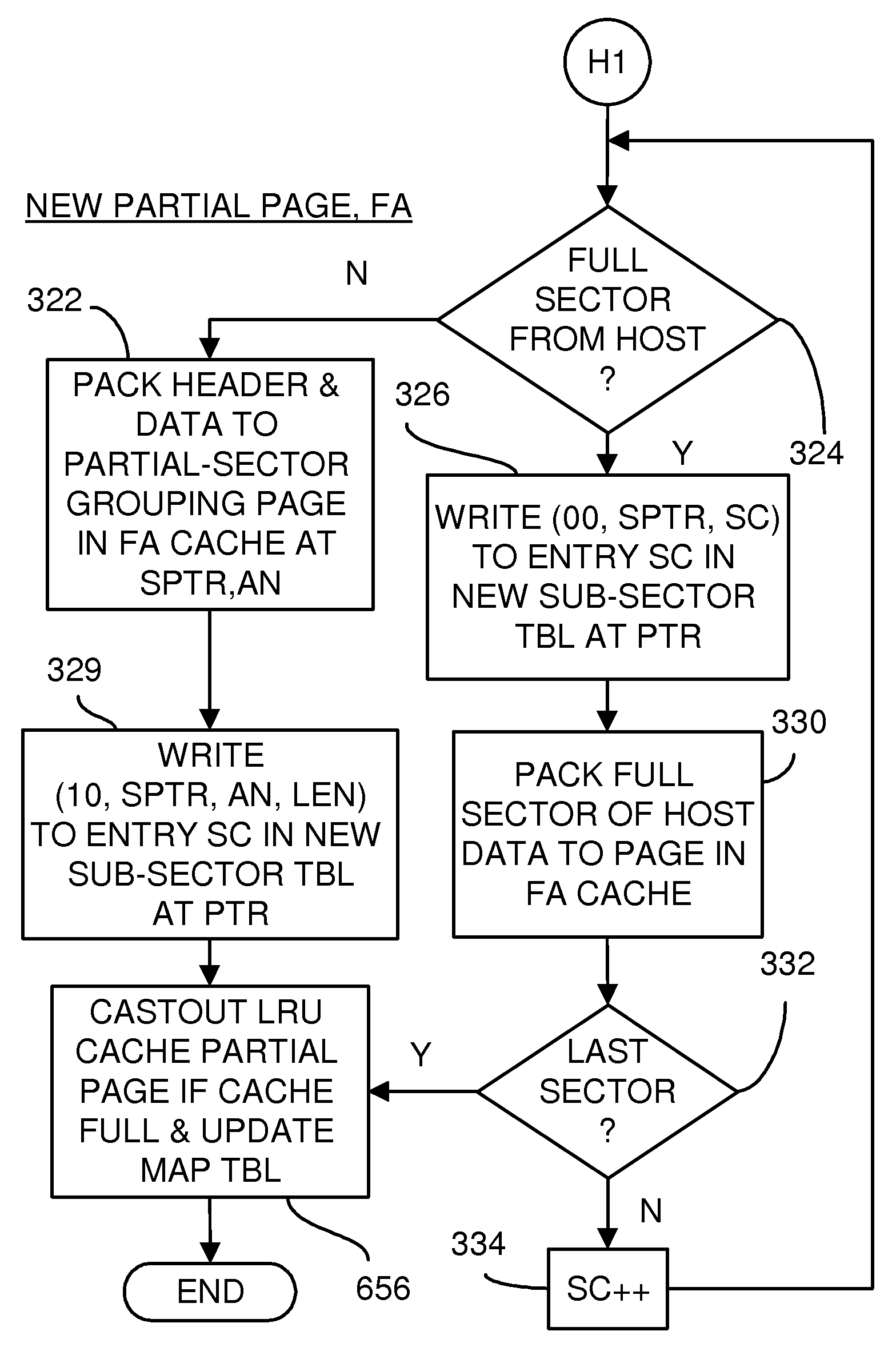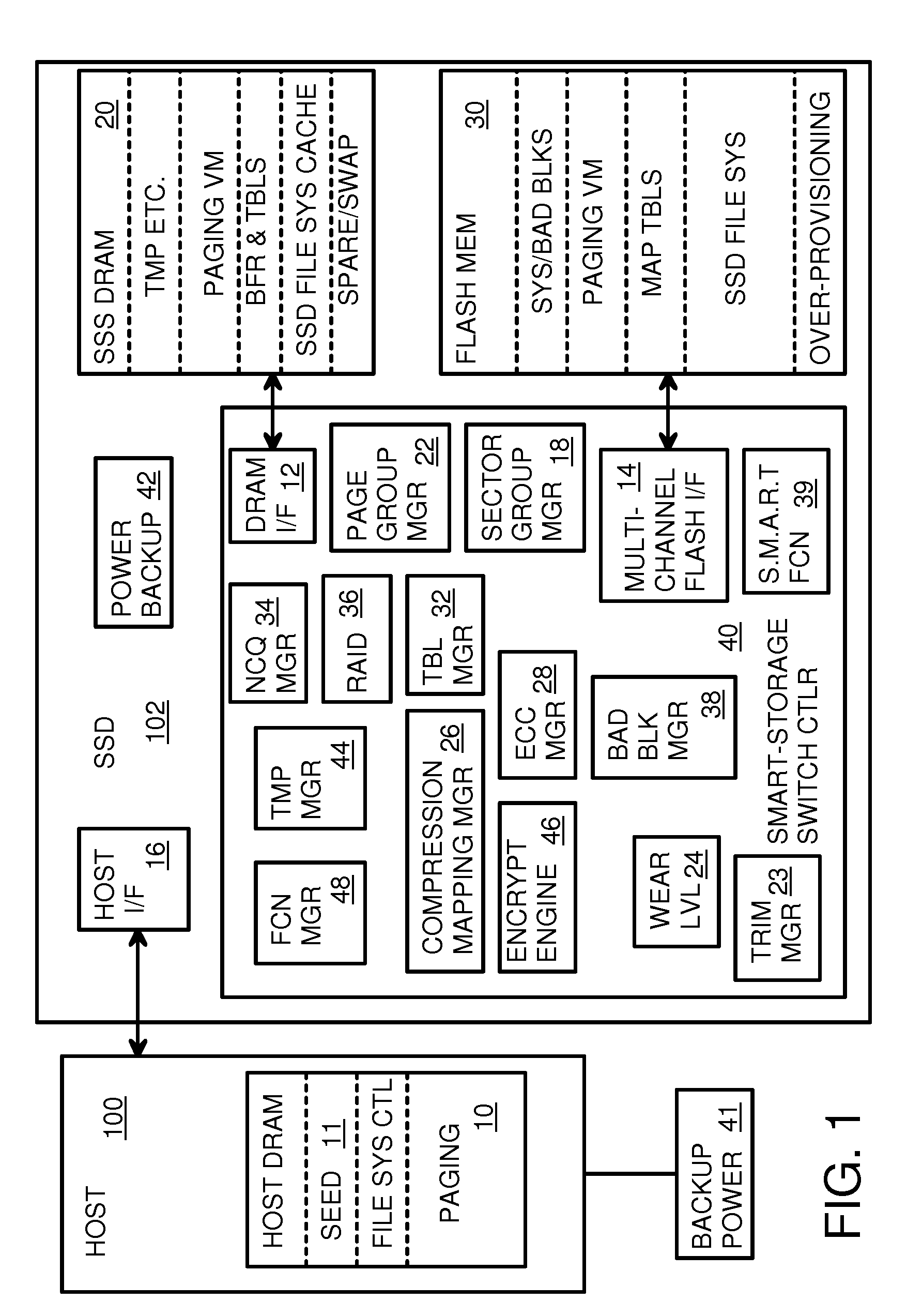Super-endurance solid-state drive with endurance translation layer (ETL) and diversion of temp files for reduced flash wear
a solid-state drive, endurance technology, applied in the direction of memory adressing/allocation/relocation, instruments, digital storage, etc., can solve the problems of electrons leaking or trapping into the floating gate, thin oxides are more susceptible to trapped charges, and sometimes fail more easily,
- Summary
- Abstract
- Description
- Claims
- Application Information
AI Technical Summary
Problems solved by technology
Method used
Image
Examples
Embodiment Construction
[0040]The present invention relates to an improvement in flash-memory drive endurance. The following description is presented to enable one of ordinary skill in the art to make and use the invention as provided in the context of a particular application and its requirements. Various modifications to the preferred embodiment will be apparent to those with skill in the art, and the general principles defined herein may be applied to other embodiments. Therefore, the present invention is not intended to be limited to the particular embodiments shown and described, but is to be accorded the widest scope consistent with the principles and novel features herein disclosed.
[0041]The wear on underlying flash devices may be reduced by blocking unnecessary writes to the flash memory. A DRAM buffer in the flash drive can store data that does not need to be stored permanently and thus does not need to be written to flash. The DRAM is not only faster, it can be over-written more than one million ...
PUM
 Login to View More
Login to View More Abstract
Description
Claims
Application Information
 Login to View More
Login to View More - R&D
- Intellectual Property
- Life Sciences
- Materials
- Tech Scout
- Unparalleled Data Quality
- Higher Quality Content
- 60% Fewer Hallucinations
Browse by: Latest US Patents, China's latest patents, Technical Efficacy Thesaurus, Application Domain, Technology Topic, Popular Technical Reports.
© 2025 PatSnap. All rights reserved.Legal|Privacy policy|Modern Slavery Act Transparency Statement|Sitemap|About US| Contact US: help@patsnap.com



